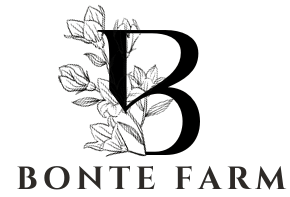Bonte Farm
Bambusa oldhamii: A Towering Giant of Bamboo
Bambusa oldhamii: A Towering Giant of Bamboo
Couldn't load pickup availability
Bambusa oldhamii: A Majestic Giant for Tropical Landscapes
Bambusa oldhamii, commonly known as Oldham's Bamboo or Giant Timber Bamboo, is a large, clumping bamboo species prized for its impressive size, straight culms (canes), and elegant appearance. Native to southern China and Taiwan, this bamboo is a popular choice for screens, windbreaks, and creating a tropical or Asian-inspired aesthetic in landscapes. Unlike running bamboos, it is a clumping variety, meaning it spreads slowly and is much easier to contain.
A Towering Presence of Green Elegance
- Impressive Culms: Features tall, straight, and thick-walled culms that can reach significant heights, creating a dramatic vertical element in the landscape.
- Lush Green Foliage: Displays attractive, deep green leaves that provide a dense and lush screen or backdrop.
Botanical Characteristics:
- Scientific Name: Bambusa oldhamii
- Common Name: Oldham's Bamboo, Giant Timber Bamboo
- Growth Habit: Clumping bamboo with upright culms.
- Foliage: Lance-shaped, deep green leaves.
- Mature Size: Typically reaches 40-60 feet tall and 20-30 feet wide, with culms up to 4-6 inches in diameter. Size can vary depending on climate and growing conditions.
- USDA Hardiness Zones: 8-11 (tolerates temperatures down to approximately 15-20°F once established).
Cultivation and Care:
- Sunlight: Prefers full sun (at least 6 hours per day) for optimal growth and vigor. Tolerates some light shade, but growth may be less robust.
- Soil: Adaptable to a wide range of soil types, but prefers well-draining soil that is rich in organic matter. Avoid poorly draining soils, as this can lead to root rot.
- Water: Requires regular watering, especially during establishment. Once established, it is moderately drought-tolerant but performs best with consistent moisture. Water deeply and allow the soil to dry slightly between waterings.
- Fertilizer: Benefits from regular fertilization, especially during the growing season (spring and summer). Use a balanced fertilizer or a fertilizer specifically formulated for bamboo.
- Temperature: Prefers warm temperatures and is tolerant of heat and humidity. Can withstand light frost once established but may be damaged by severe or prolonged freezing temperatures.
Landscape Use:
- Screen/Windbreak: Its dense growth habit and tall stature make it an excellent choice for creating privacy screens, windbreaks, and visual barriers.
- Specimen Plant: Can be used as a striking focal point in large gardens and landscapes.
- Background Planting: Provides a beautiful backdrop for other plants and features in the landscape.
- Tropical/Asian-Inspired Gardens: Creates a lush and tropical or Asian-inspired atmosphere.
Wildlife Attraction:
- Habitat: Provides shelter and nesting sites for birds and other small animals.
- Erosion Control: The extensive root system helps stabilize soil and prevent erosion, particularly on slopes.
Pest and Disease Resistance:
Generally resistant to pests and diseases. However, some common bamboo pests, such as aphids and spider mites, may occasionally be present. These can usually be controlled with insecticidal soap or horticultural oil. Root rot can occur in poorly draining soils.
Propagation:
Primarily propagated by division of rhizomes (underground stems). This is best done in spring or early summer. Small offsets can be carefully separated from the main clump and planted in a new location.
Incorporating Bambusa oldhamii into Your Landscape:
When designing your landscape, consider the following tips:
- Spacing: Allow ample space for its mature size, as it can become quite large. Consider the mature width of the clump when planting near structures or property lines.
- Containment: While it is a clumping bamboo, it can still spread over time. If you wish to strictly limit its spread, you can use a physical barrier, such as a concrete or metal edging, buried at least 2 feet deep around the planting area.
- Pruning: Minimal pruning is required. Remove any dead or damaged culms as needed. Lower branches can be pruned to create a more open and airy look.
- Soil Amendment: Amend heavy clay soils with organic matter to improve drainage.
Relevant Plants: Bambusa oldhamii, Oldham's Bamboo, Giant Timber Bamboo, clumping bamboo, bamboo screen, bamboo windbreak, privacy screen, tropical plants, Asian garden, fast-growing bamboo, large bamboo, USDA zone 8, USDA zone 9, USDA zone 10, USDA zone 11, erosion control, bamboo propagation.
Share








